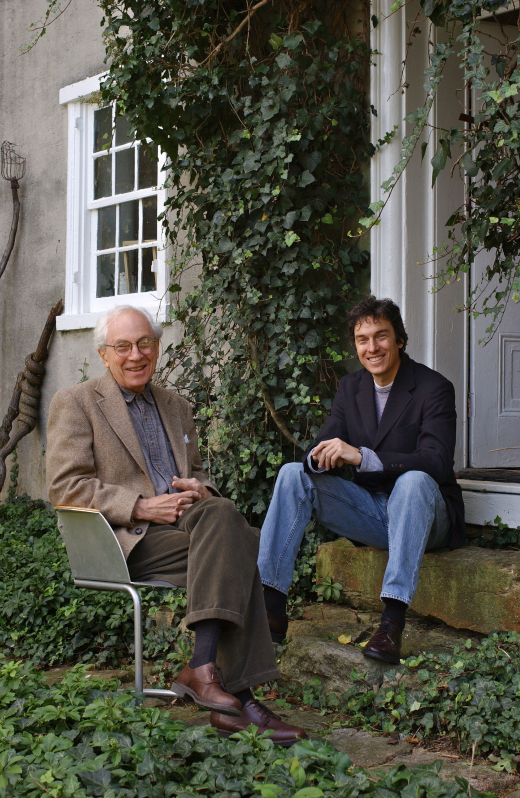Born in late 1958, I was almost two years old when my father’s Petal Table was introduced by Knoll in the Los Angeles showroom in 1960, and almost 6 years old when Knoll introduced his now iconic “Leisure Collection” in Miami in 1966 (He has always disliked the name Leisure Collection, so long after Knoll ceased production in the mid 1980’s and when we resumed production on our own in 1992, we renamed it the 1966 Collection.) Because I was so young at the time I don’t remember the specifics of the development of those designs. It does make me think though about how this time in my father’s life was so productive and creative.
My parents met while working at Knoll in New York City in 1950. As my father tells it, he walked into the Knoll New York City offices and was seen by Florence Knoll, who everyone called Shu because her maiden name was Schust. He showed her the general sketchbook of his travels that he had kept while traveling in Europe that summer, just after having graduated from the Institute of Design in Chicago. She hired him right away, apparently calling in Hans Knoll to close the deal. Hans asked my father what he wanted to earn, and my father as is typical of him had no idea what a reasonable salary was, so accepted whatever Hans offered him.
His first task with Knoll was working in their New York offices on small scale models of furniture for a presentation that Hans needed to make to the State Department. According to him he really didn’t know what to do in an office environment and couldn’t sit still at a desk. During this time he met my mother, who had been hired previously to work with Shu in the planning department as a general assistant. One of her favorite tasks was going to the flower district in New York to buy flowers for the showroom, then arranging them just as Shu prescribed in tight arrangements in vases. Shu definitely did not want large loose showy flower arrangements in her showroom.
Shu convinced Harry Bertoia, who she knew from her days at Cranbrook and had left the Eames office in California, to move east to Bally, Pennsylvania near the growing Knoll manufacturing facility in East Greenville. Harry rented and later bought a former car garage in Bally to use as a design and sculpture studio. Given my father’s poor performance in the office he was quickly dispatched to Pennsylvania to work with Harry as an assistant on his project for Knoll, designing a line of furniture. As my father tells it, Harry was not quite ready yet to have an assistant because he did not think the project was far enough advanced, but Dick managed to integrate himself into Harry’s process. I think these were some of the most exciting years of my father’s life, as he was able to work with someone whom he admired immensely for his creativity and skill and genuine human qualities. Eventually Knoll also hired Don Petitt who was Dick’s roommate at school and had been working in New York with George Nelson. Don and my father shared a rented farmhouse near East Greenville and my mother would take the train out on the weekends to visit.
At the time that the Bertoia furniture design was complete my parents decided to marry and wanted to spend some time in Europe. My father told Hans that they would marry and leave Knoll to travel to Europe and Hans famously replied, “You can’t do that!” which my father took to mean that they could not get married. Hans actually meant that he could not leave Knoll and suggested that my father might work with Knoll licensees to set up production in Europe, particularly France, Belgium and Sweden. He also hired my mother to help with showroom design and layout. The Knoll showroom in Paris was situated at street level, and above it just under the roof Hans had rented and elegantly furnished an apartment with Knoll products. Hans allowed them to live in the apartment and they stayed for two years, during which time they traveled throughout Europe setting up production of Bertoia chairs.













